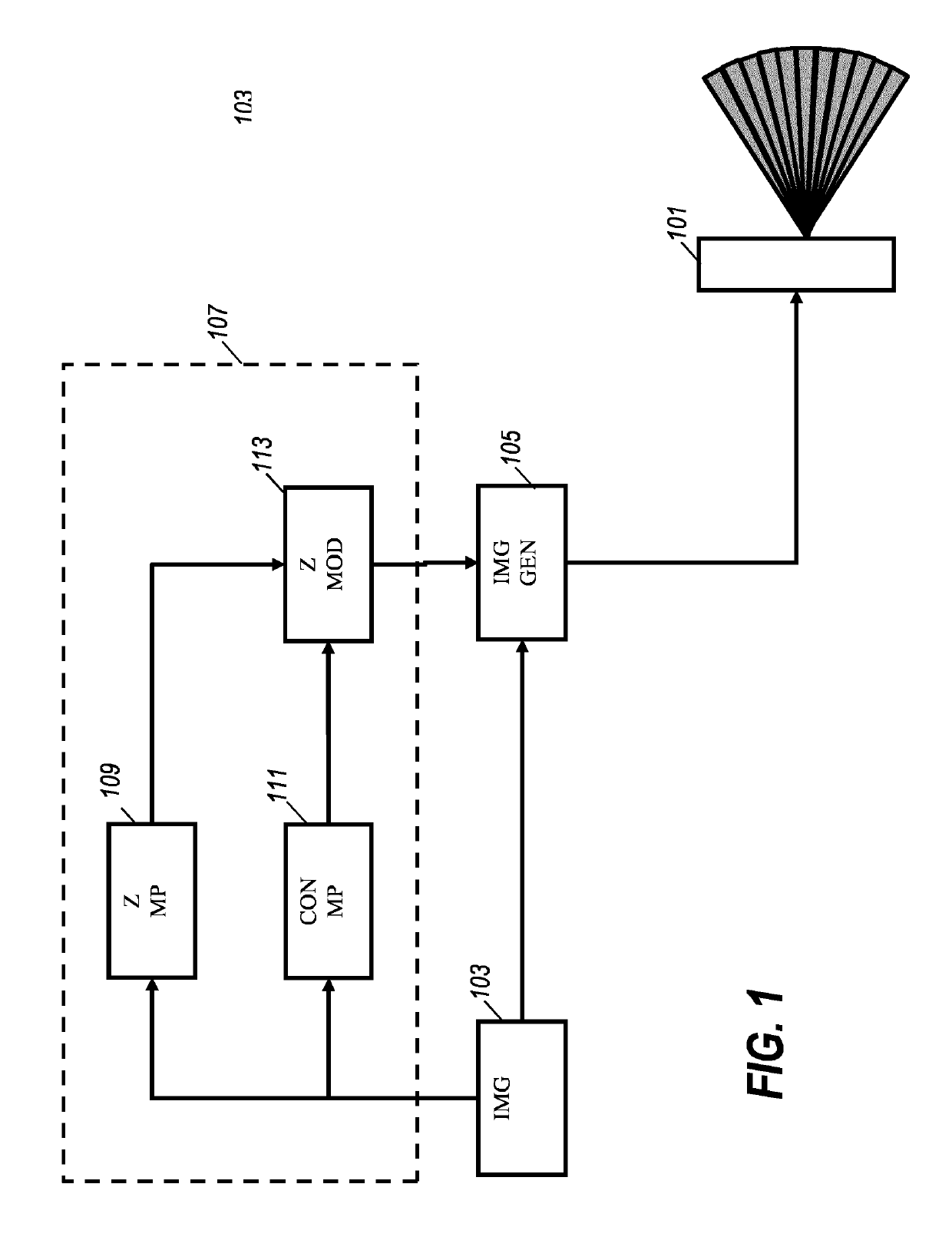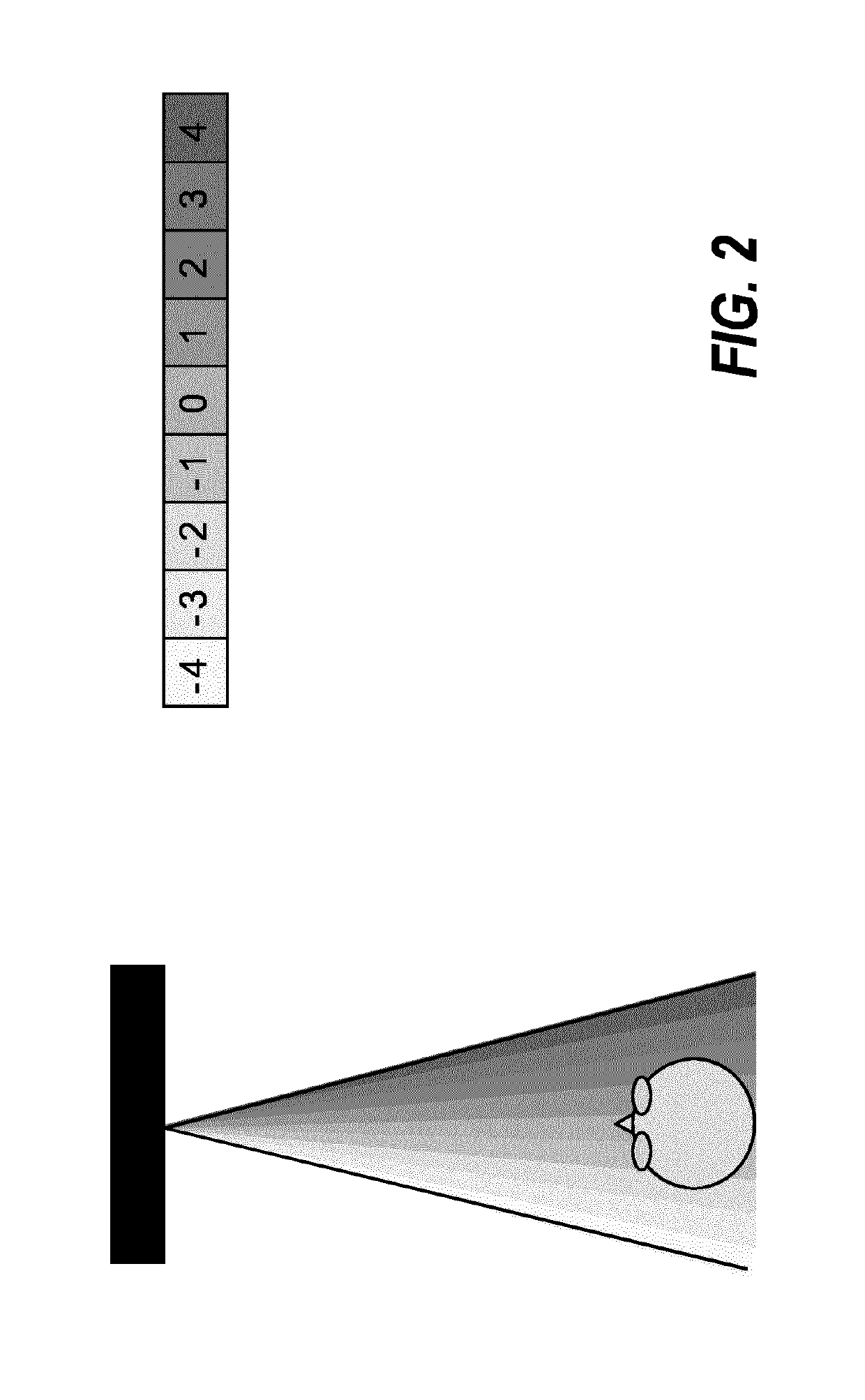Processing a depth map for an image
a depth map and image technology, applied in image analysis, image enhancement, instruments, etc., can solve the problems of non-ideal depth values, degraded three-dimensional image quality, and insufficient accuracy, so as to achieve advantageous performance in practice, improve depth values, and operate efficiently
- Summary
- Abstract
- Description
- Claims
- Application Information
AI Technical Summary
Benefits of technology
Problems solved by technology
Method used
Image
Examples
Embodiment Construction
[0054]The following description focuses on embodiments of the invention applicable to a depth map for a three dimensional image being a frame of a three dimensional video sequence. However, it will be appreciated that the invention is not limited to this application but may be applied to e.g. individual three dimensional images consisting in an image and an associated depth map. Similarly, the description will focus on an application in a system generating view images for an autostereoscopic display but it will be appreciated that this is merely a specific example, and that the depth processing will be equally applicable to many other applications and uses.
[0055]FIG. 1 illustrates an example of a system in accordance with some embodiments of the invention. In the specific example, images corresponding to different views of an autostereoscopic display 101 are generated from an input three dimensional image. The input three dimensional image may for example be represented by a single ...
PUM
 Login to View More
Login to View More Abstract
Description
Claims
Application Information
 Login to View More
Login to View More - R&D
- Intellectual Property
- Life Sciences
- Materials
- Tech Scout
- Unparalleled Data Quality
- Higher Quality Content
- 60% Fewer Hallucinations
Browse by: Latest US Patents, China's latest patents, Technical Efficacy Thesaurus, Application Domain, Technology Topic, Popular Technical Reports.
© 2025 PatSnap. All rights reserved.Legal|Privacy policy|Modern Slavery Act Transparency Statement|Sitemap|About US| Contact US: help@patsnap.com


